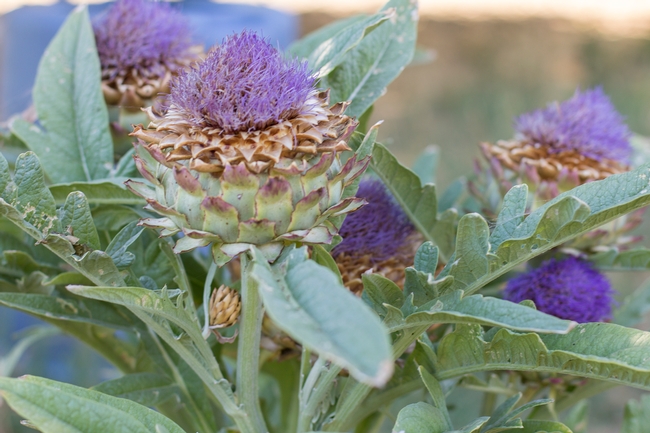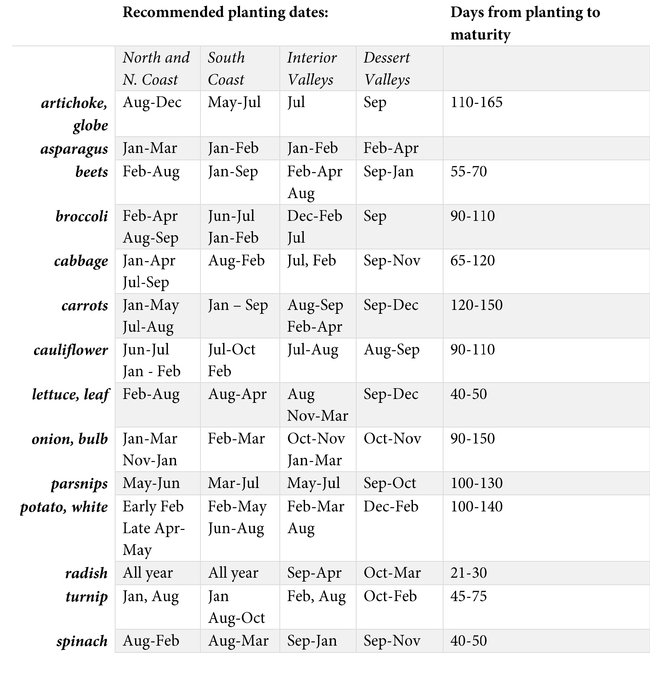
Warm vs. cool season crops
Most vegetables are classified as either a warm season or cool season crop. This designation is based on the temperature range that the plants thrive in. Warm season crops grow best when the days are long and the temperatures are high (between 65°-95°F). In contrast, cool season crops grow and produce the best quality produce when the average temperatures are between 55°-75°F and are typically tolerant of light frosts when mature.
Typical cool season crops include root vegetables such as: beets, carrots, parsnips, and radishes; stems such as asparagus and rhubarb; leafy crops like cabbage, celery, lettuce, spinach and crops that have edible immature flowers like artichokes, cauliflower, and broccoli.
Importance of frost dates

“When deciding what to plant in your edible garden it is important to take into consideration the best months a crop will thrive,” says Missy Gable, statewide director for the UC Master Gardener Program. “Fall can be a very rewarding gardening season. There are a variety of delicious crops that can survive the cooler temps and have a short number of days to maturity.”
Guides for determining the first and last frost dates for a specific area or region are available using historical references from the National Weather Service. Visit the California Garden Web section “When should plant my garden? Frost dates” webpage for detailed information about when to safely plant frost-tender crops.
Cool season vegetable gardening at a glance:
Learn more with the UC Master Gardener Program

Originally published on UC ANR's Food Blog (09/13/2016)
Resources:
Vegetable Gardening Basics, http://anrcatalog.ucanr.edu/pdf/8059.pdf
California Gardening Web, cagardenweb.ucanr.edu/
California Master Gardener Handbook, Home Vegetable Gardening, page 338-339, anrcatalog.ucanr.edu
University of California Cooperative Extension Vegetable Research & Information Center, vric.ucdavis.edu
